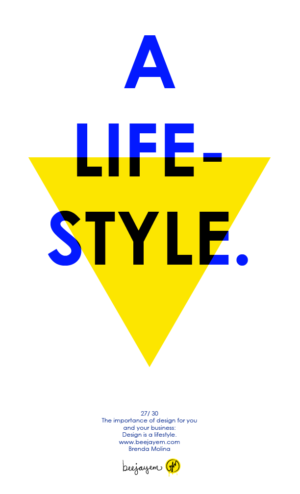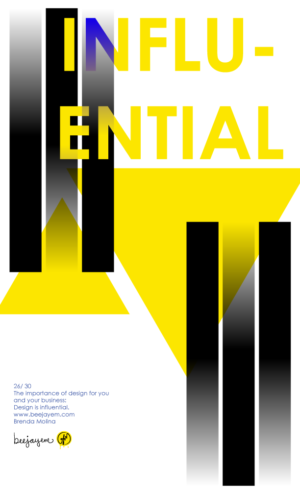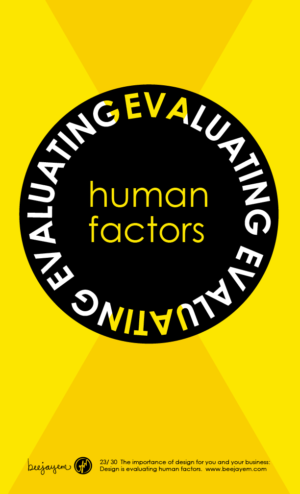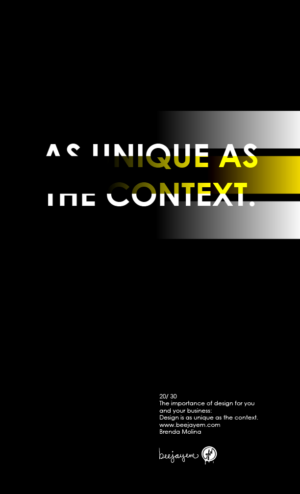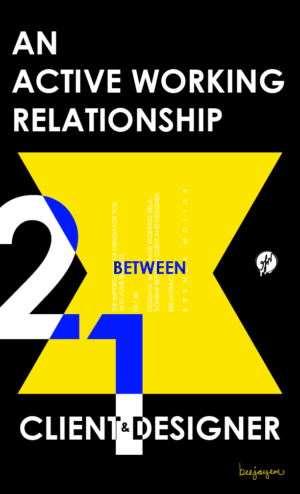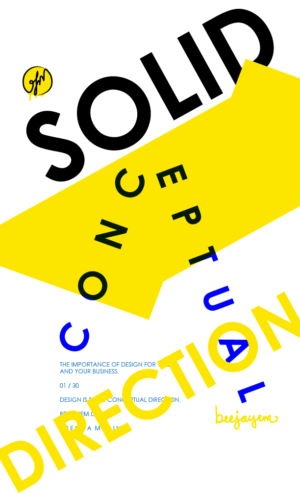
The Non-Fiction Adventures of a girl who tried to be more than what she was taught was supposed to be her place. Story One.
View PostChoose your adventures.
I wanted to share an experience I had a few years ago when I lost my first job at a studio. So I figured I’d start freelancing, but I didn’t go out and network, I was too shy for that (!) That was my first mistake. Then, I started working on many competition sites, it was fun and all, but I was broke. I needed money so I continued and I wouldn’t win! Yup, second mistake!!
The cool thing was being able to see all the submissions, I say for learning purposes. My logos were actual logos (but design is subjective, right?) compared to the other crazy submissions. Sometimes the winner was justifiable, but it pissed me off that these clients were choosing all these unusable logos! So for my last submission, when I decided to just do something else productive, I went all out and used Photoshop :O. Layered the shiznet out of it and through a border on it. I finished quick and against what I would rather do. I thought “I bet they’re going to choose this crap!” Fast forward, nope I didn’t win, they chose an icon that formed “BT”, an actual logo. Nice and simple, like a logo should be.
The lesson is to choose your adventures. If you’re going to do something, do it right and with the right people. Sometimes you’ll get clients who don’t know what they need and why they need it. Other times you’ll get a project that is ridiculous. Your job is to say “No” and move on, but stay true to your style, know the rules then break them and most importantly don’t do it just for the money.
How to disagree without sounding like a jerk.
We’ve all encountered crappy clients, mean people and disrespectful associates. They are everywhere and they are everybody (at one point or another it has been you). So how do you respond to a rude comment or an insensitive request? I learned to stop, listen and take a deep breath from almost every cartoon in PBS and like Daniel Tiger sings, “When you feel SO mad that you want to ROAR take a deep breath … and count to four.” The idea is to not think with emotion because sometimes when feelings are hurt, value and information can get lost in translation.
A while ago, a client emailed me with what I instantly classified as “Ridiculous Feedback.” To give you a gist of the situation: project is in approval stage with one more round of changes if needed, the next day I receive an email with a general “Let’s change the whole concept, it looks great, but I don’t know what I want. This other person said this would sound better, can you change the text to: Something that would make no sense.” Why I was so upset was for their lack of communication, direction, and care for the project as a whole. I break down my process in steps to make sure we are all on the same page and sometimes that still doesn’t help. I was just thinking, “how do I respond to this? This whole conversation forwarded to me (in the email between different people) doesn’t make any sense! Why didn’t they tell me their concerns when we spoke yesterday?”
How do you tell someone they are going down a different road than previously discussed without sounding like a jerk? All I kept typing as a response was “This doesn’t make any sense! That is not your business model, those are not your business values and it would take so much more work within your business to represent a culture like the one you are trying to portray in this ONE design.” But, I was thinking too deep into their words and I definitely didn’t want to insult anyone. I took a chill pill (drank some coffee and read a book). I went back to the email because I have to respond as soon as possible, no one likes to wait, and I reread the email which sparked an idea, did some quick research and suggested a couple solutions that welcomed their feedback but still kept the spirit of the whole project. I was proud of myself and our results.
If you are lucky enough to get insulted via email instead of an instant source of communication (like in person or a phone call) then remember to “take a deep breath … count to four” and shift your mind before you respond. My problem in the situation above was all based on emotion. I was insulted by their lack of communication and style that their implicit direction for the project was just a slap in the face, but all boo-boos aside they weren’t completely happy with the message and as a professional, I needed to guide them and address any feedback provided. See any negative feedback as an opportunity to improve the design instead of a change that will ruin the aesthetic and function.
See any negative feedback as an opportunity to improve the design instead of a change that will ruin the aesthetic and function. It is always better to try to understand where they are coming from than to dismiss another person’s ideas as ridiculous and unnecessary. We are all different and uniting minds can sometimes be a challenge so receive critiques with an open mind and willingness to apply other solutions. Give your solutions and don’t forget or feel ashamed to charge more if necessary! After all, it’s business, not charity (and even then don’t accept abuse and set your limits).
Do you have anything to add? Let me know! Take care and have fun. 🙂
You’re a small business or an entrepreneur. Why do you need a brand?
View PostOur nature is to DO. (Don’t make excuses and DO IT!)
This is almost a follow-up of my posts about “doing”: Having Creators block? Feed Your Spirit and How FEAR almost ruined my life. And, almost a talk to myself as well as I clear my mind and realize things in life.
I use to always tell myself how naturally good I’ve always been in any creative project I take on. I mentioned this before, right? Whether it was hands on or digital, finding creative solutions to getting my codes and websites to run exactly how I wanted them run visually; I once grabbed a string and learned how to do bracelets, I took some newspaper and created backgrounds for a photo book I made, I grabbed a needle and figured how to sew and then I graduated from college and realized that talent wasn’t enough. At least, not with my lack of anything extroverted like socializing and communicating … with my voice. I always thought, “I don’t know what to say? How can I say this? Let me write it down. Did that sound wrong? I should’ve said this!” And just with my small “flaw” in communicating with others, I didn’t pursue frightful (fulfilling) things.
Yes, I was an excuse-factory and it always fell on my social skills which resulted in a huge snowball of flaws and excuses. Anyway, how did I move pass this HUGE impediment? Well, first I’m not like a trembling, shy human so I realized I just needed the practice. And the only way to practice is to DO. Go out and have a random conversation, preferably with an older person and see how comfortable they are. If you want to get better at drawing then draw every day. If you want to be more confident then forget about your worries and practice being confident. Fake it until you make it! (Staying reasonable of course.)
You can’t expect to improve any skill by watching a video or reading about it without putting what you just learned into practice. Yes, I told myself that after binge watching videos from Marie Forleo and Ramit Sethi, quality information and advice though! However, while a video or a book serves as a good motivator and sometimes that extra push you need comes from someone else, you have to remember that you have to actually carry out an action with as much quality in the action as you can. When you draw, draw with the awareness of drawing with quality and if you’re just not in the mood then know that the practice is better than none at all.
So fellow humans I end this with, don’t make excuses and DO IT because our nature is to do.

Do it right.
Building relationships and starting projects.
Many designers and clients don’t want to be bothered with the “hassle” of answering and asking questions. Many people believe that building a client-designer relationship is not important and they just want a fast, amazing and cheap design. Or sometimes it is more about the social aspect of the whole deal. But let me tell you, don’t be lazy. Don’t be cheap and don’t be anti-social. If you are a serious designer and you are serious about providing quality and results for your customers then don’t be the latter! I tell you from my personal experience of being too shy to build a relationship when I was starting out; that didn’t take me very far.
I’m going to take you on a small journey to better show you why having a project questionnaire is very important. I was contacted by a previous client to redesign her current food labels. She wanted them to stand out and look more professional and I responded with “GREAT! I’ll get started!” But after a few designs and many, many changes I realized we weren’t on the same page. “Stand out” and “professional” meant different things to both of us and not actually discussing her ideas and the whole vision for the project BEFORE any research and design was started only made this “easy” project extremely frustrating and very time-consuming. This was my first real customer and I am so thankful that we were very patient with each other. Furthermore, it was a great learning experience for me.

You can see how the design evolves from what I assumed the customer wanted to what the customer was happy with AFTER finally discussing her vision.
So, what are the initial questions you should ask and why?
Well, ask “the Basics” and use these initial responses as a way to filter your project requests. If you are not a good fit then it is better to say no, “I’m sorry I won’t be able to take on this project but, I can refer you to this other awesome designer with the skillset you need!”
“The Basics”
- Who is the primary contact? Get their name, phone number and email. It’s important to have ONE person who is ultimately in charge of the project decisions.
- What company is this for? Get the name and website if available. Also, ask about their products, services or how they make a profit so you are well acquainted with their business.
Now learn more about their project and their goals.
- Ask if it’s a new design or redesign?
- What are their goals for the project?
- Who else will be working on the project with you?
- What is their preferred deadline and why?
- Ask about their target audience and ideal customer?
- Who are their competitors?
- And what are they worried about with this project?
Take in their responses and understand your prospect and their project. Decide whether or not you’ll be able to provide what they need. And finally, align visions and kickass!
Reference my initial questionnaire I have posted online if you’d like and let me know if you have any questions. I’d be happy to help you out.

Build a relationship, not a transaction.
Having creators block? Feed your spirit.
There is nothing more important than the well-being of your mind. And we all have those days where you just want to chill all day, watch TV and order in. Go ahead and have those days and enjoy them, but you can’t allow it to become a habit. So what do you do when you have to do and you don’t want to? You do what makes you happy.
Take 20 minutes and go out for a walk, exercise, nap, meditate, read or paint. Escape all your thoughts and leave your worries for a few minutes. All it takes are a few minutes to get back on track. But, what if relaxing your mind doesn’t work? Then maybe what you’re looking for is a form of inspiration and motivation. Listen to a great podcast, read an inspiring book or watch a documentary/video with motivational speakers.
We live in the age of information so whatever you need you just have to search for it. Once you’re out of the rut DO, DO, DO! Take a break, feed your spirit (or your family, don’t forget about them) and get back to doing.
Also, before I end this snippet, the best form of inspiration is gratitude. Always remember what you’re thankful for.
What books, videos or activities do you do?
How FEAR almost ruined my life.
I am one of those people who love to learn and have always turned any boring or unusual encounter into an exciting adventure full of possibilities but from one moment to another I was lost in an emotional darkness.
This is coming straight from the heart for those who need it in theirs.
I almost switched careers, or to be honest, almost gave up on being a creator. I let fear ruin a chapter of my life. I went from being a person full of wonder and excitement to a being so afraid of failure my mind was curled up in a tiny ball not willing to open up and try anymore. I settled for a horrible job at Sears (no offense to anyone in retail) as a Merchandising and Customer Assistant. I became depressed and went on day by day with hidden sadness. I was disappointed, completely unmotivated and becoming bitter. “I have a degree! I’ve had jobs that pay better! I’m a failure.” It took me a while to realize when it was happening since I was experiencing an emotion I hadn’t too much experience with. Yes, my siblings bullied me but I only knew annoyance and happiness. I always believed I was great at seeing an imaginary, fantastical world but I found myself in a horrible store. I cleaned, fixed clothes, cleaned, watched drama from afar and analyzed people. I started to change my mindset and found an opportunity within the darkness I was feeling.
“How can this experience make me a better person? What skills can I learn here? What can this person teach me about myself? There is a reason why I am here at this point in my life, why?” My imagination started rolling, the possibilities started showing and then there was fear shutting me down.
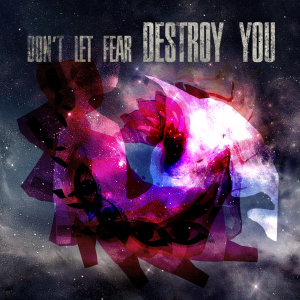
How fear almost ruined me.
I stopped caring so much about the little details. The excuses I would use to explain why I wasn’t ready to use my education and take my love for design to the next level. I used excuses to derail me from my journey as a graphic designer. Bills, money, family, friends, pets and everything about life was starting to become a burden. “The total of all these burdens are once what I loved about my life and now they are reasons why I’m not doing this or working on that? What’s wrong with me!”
It was a real battle inside my mind. I started questioning myself and reflecting on my experiences. My mind continued changing as I read books to feel motivated and inspired to continue on my journey. I was engulfed in understanding what I was feeling and how someone who never lost inspiration could just fall into such a dark place. I realized, life just happened. So I got up, learned and pushed fear aside. It’s easy to be afraid of failure and to be afraid of not being good enough but never let it hold you back. Of course, fear is always going to be around but I no longer live it. I just close my eyes and say “fuck it, let’s see what happens if I DO THIS!”
Remember to stay hungry. Stay confident. Always get back up. Learn, live and share but NEVER LET FEAR HOLD YOU BACK.
Learn about Graphic Print Production in Two Minutes!
A better way to truly understand graphic print production is to break down the whole process into 8 steps in 4 phases:
IDEA AND CONCEPT PHASE should include strategic work and creative work such as brainstorming, asking and answering questions about your project as a whole. What will this product be used for? Do you really need a printed product? Also you start to develop the design and the message you are trying to send to your audience. What is your message? Do I need a booklet or just a poster?
CREATIVE PRODUCTION PHASE includes images, text and layout work. In this phase the original images, illustrations and typography are created. Experts such as photographers, illustrators, retouch specialists, authors, prepress and printing companies are usually a few of the professionals needed to produce your product. In this phase, the customer would receive any proofs and approves all work.
INDUSTRIAL PRODUCTION includes prepress, printing, finishing and binding. Usually the printer will take care of the prepress process of getting the files and images print ready and the customer also approves the printer’s proof. The printing method usually depends on the type of printed product being created, the amount needed, the material on which the product will be printed and of course the quality needed. Just like printing, finishing and binding depend on what your printed product needs. It’s important to really think about the binding and finishing first since that might really tell what paper or material to be used for a certain binding. In this phase final approval is given by the customer on the finished printed product.
LOGISTICS PHASE marks the end of production of your printed product and deals with the distribution of it. The customer at this point also takes care of any packaging if needed. It’s usually common to work backwards in a sense as distribution can affect the printing, finishing and binding of the product to reduce costs. And of course, changing these might need you to adjust your layout and creative work.
Read more
A book you should definitely check out is “A Guide to Graphic Print Production” by Kaj Johansson, Peter Lundberg and Robert Ryberg.
It is extremely helpful and has a ton of information on everything that has to do with graphic print production.




